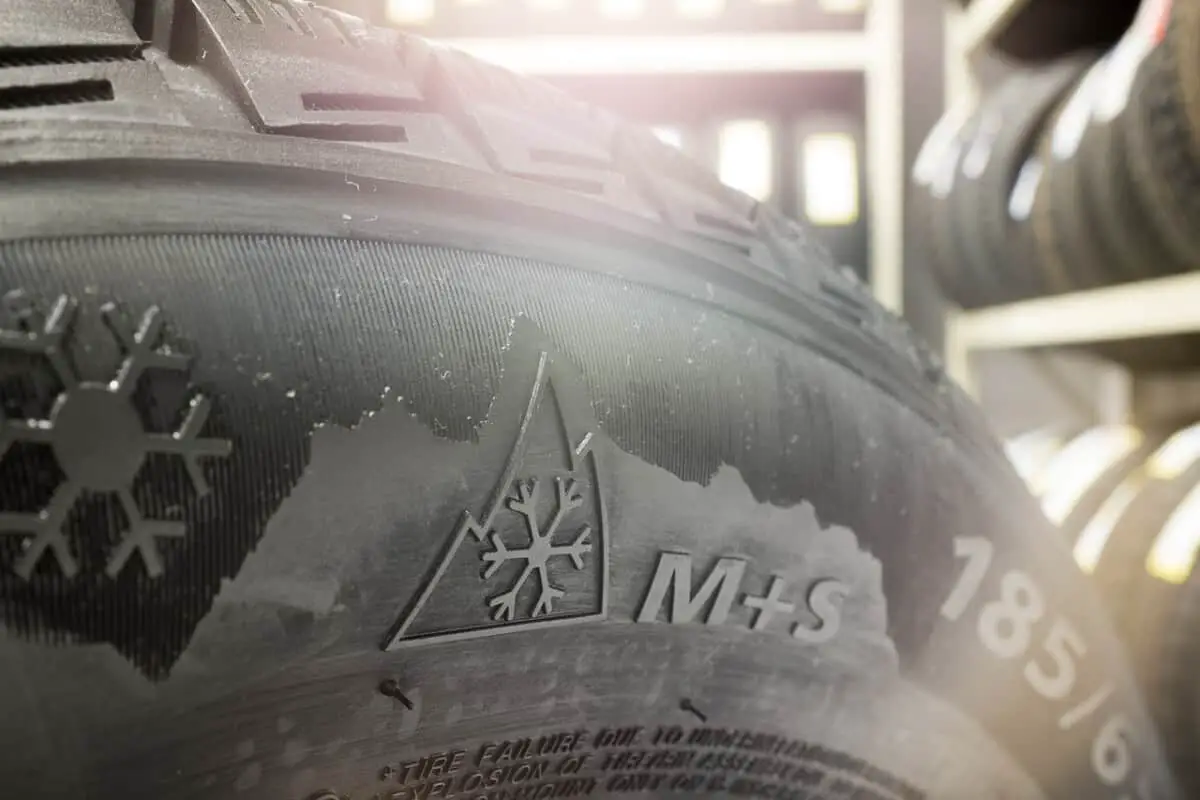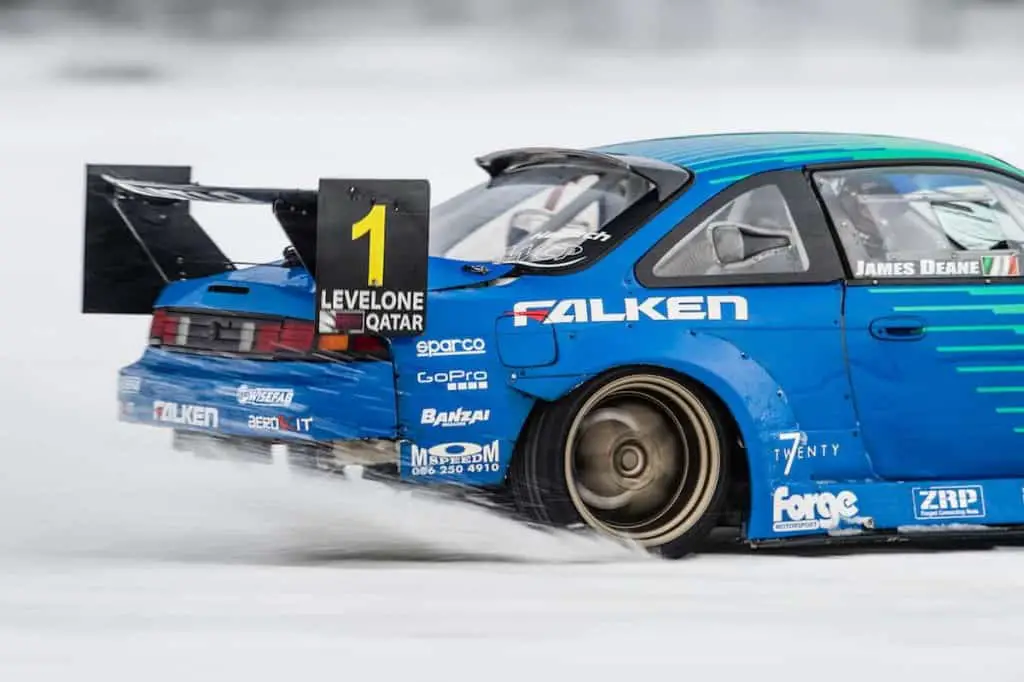Touring Caravan use in the UK is very much a three-season pastime with a significant percentage being taken off the road and stored in the winter months. In fact, if you ask your search engine for information on winter caravanning, you’re more likely to get a web page on how to lay your caravan up for the winter than how to keep it on the road and continue to enjoy using it.
The same is true of ‘preparing your motorhome for winter’. Here we’ll look specifically at the winter tyre and snow chain advise and legislation that applies to you if you’re thinking of taking your caravan skiing.
Do caravan skiers need winter tyres & snow chains? Yes, if you’re travelling to a ski resort or town for winter touring with your caravan, you will need winter tyres and snow chains.
Travelling Overseas With Your Caravan in Winter
Those hardy folk that do persist and keep going all year round are often very knowledgeable about keeping their caravan safe and habitable in the winter months, but may not consider UK winter road and weather conditions sufficiently adverse to use winter tyres.
With mild winters, global warming, and only occasional snow in much of the UK, why would we even need them?
Recent surveys show that 80% of drivers do not consider winter tyres necessary for UK use, even though the benefits of using winter tyres are evident in all conditions below 7℃. Interesting to note that many tyre industry experts show their everyday vehicles with winter tyres year round in the UK.
About Your Tow Vehicle
For many British caravanners the choice of tyres for their tow car is not determined by the fact that they will occasionally tow a caravan, but by budget constraints and the uses they generally have for their car.
However, if you are proposing to take you car towing a caravan into Europe to the mountains in winter, you need winter tyres. Not just because it is a legal requirement in many countries, but because it would be really unsafe to do otherwise. There will be those that say don’t bother, they have never had an issue, you won’t get caught, please ignore them, they are just wrong! The latest rules for Germany set out the benchmark for compliance across the EU.
Let me put it this way. Do you wear a seat belt when driving to keep safe in your car and comply with the law in UK and elsewhere? Yes. Ok go and buy some winter tyres, it’s the same thing!
Take a look at this video to get an idea of the benefits of winter tyres.
What type of winter tyre should I buy?
There are two options for winter tyres: Full Winter and All Season
Critically they must have the three peak mountain symbol with snowflake (3pms), which is the gold standard, without which they will not be legal in Germany, Austria and an increasing number of countries. All season tyres, which are described as having a summer bias, are unlikely to come with 3PMS labelling, but do your research carefully to be confident about what you are buying. There are some great reviews on YouTube.

It is no longer sufficient to have just the M+S (Mud & Snow) logo on the tyre, even if it came as standard equipment on your car. The 3pms logo above is the key.
MyTyres.co.uk have come out very competitive on a number of test searches we’ve done and I’ve purchased several sets for both my car and caravan from them with no problems. If you want to see whether they have something for you, you can use this handy search tool.
The Second Hand Market for Winter Tyres
In Europe it is common practice for car owners to have two sets of wheel and tyres, one for summer and one for winter. Indeed there is a thriving second-hand market in winter tyre sets as drivers change their cars. Many dealers on the continent even offer trade in deals as part of the package when you buy a new car. So if you are over there in the summer and have space to carry a second set home, there are bargains to be had.
In the UK websites such as gumtree, preloved and FB marketplace (Check out Motorhome and Ski Marketplace) regularly have sets for sale so it is possible to set yourself up with a winter set for a lot less money than from a dealer. Remember that tread depth regulations are different in the EU with 4mm being required in many countries in winter rather than the 1.5mm in the UK, making some second-hand tyres unusable even though they appear to be in good condition. Care is needed when buying in this way. I purchased second hand rims for my 4×4 from marketplace and put new winter tyres on them to ensure I was getting the tread depth I needed from the start.
Tread depth regulations are different in the EU with 4mm being required in many countries in winter
Full Winter or All SeasonTyres?
From my own experience with both 4×4 and two-wheel drive cars, full winter tyres are the way to go when towing a caravan, they offer the maximum benefit that comes from a dedicated tyre, manufactured for the specific purpose of driving in winter. I currently use Vredstein Wintrac Pro tyres on my Land Rover Discovery and have found them excellent over two winters towing my 2000kgs caravan through the Alps.
I have also used Dunlop Winter Sport run flat tyres on a BMW 5 series and found that they transformed the car from useless to very good for solo use in the Alps. I have not towed with the BMW on the Winter Sports in Alpine conditions, so therefore cannot recommend.
The laws governing when winter tyres should be used vary from country to country, but if in Europe you follow the Germans in their traditional use between October and Easter and at home remember they come into their own below 7℃, you won’t go far wrong. For a full up to date list on where it is mandatory to have winter tyres and the rules on chains, click the image or link below.
The difficulty with having two sets of wheels, or just tyres if you choose to have a garage swap them on the same rims as the seasons change, is storage and the general faff of swapping them over. If you have space in your garage or garden shed then fine, but if not some tyre dealers offer a storage service for a small charge which includes swapping them over for you. It’s worth shopping around for a deal.
The alternative is to use ‘All Season’ tyres which arrived in the UK a few years ago, and after a quiet start are now grabbing an increasing share of the UK replacement tyre market.
Positive reviews in the motoring press coupled with competitive pricing by manufacturers is making them attractive as an everyday tyre without the hassle of having a separate set of dedicated winter tyres. It is important to note that not all ‘All Season’ tyres come with the 3pms type approval and care should be taken when selecting your tyre. Do not risk asking your retailer if they are suitable for winter mountain use as they are likely to say yes as they might be, but not legal in the countries you wish to travel to.
Not all ‘All Season’ tyres come with the 3pms type approval
A market leader for ‘All Season’ tyres is the Michelin Cross Climate which have been tested by Winterised community member Dick Donovan for the last two years on his 3500kgs Chausson Motorhome. With most car and caravan combinations weighing similar amounts, his experience below is highly relevant.
Case Study: First hand experience of the Michelin Cross-Climate
In early 2018, we bought our current motorhome and almost immediately wanted to head off to the Alps for some skiing. Having taken motorhomes to the Alps many times in the past, I knew how important it is to have suitable winter tyres for driving on snow and ice – not only do they grip better, but they also make you safer and in some European countries are a legal requirement in winter. The motorhome we bought was equipped with summer tyres so I started searching for suitable winter tyres for a 3500kg vehicle. I’m not a fan of keeping separate sets of wheels for summer and winter use – takes up too much space, extra cost and extra faff to swap over.
In previous years, I have used standard winter tyres all year without any real problems, but in 2017 Michelin introduced a new breed of tyre – the Cross Climate – a fully compliant winter tyre that meets the 3PMSF standard and is also designed for summer use. So I decided to buy a set and pray they worked!
Immediately they felt good on dry roads, but the grip pattern came into their own in some heavy rain and deep water on roads in Sussex – they just gripped superbly. We drove down to the Alps and encountered lots of wet snow and slush in Germany and some deep snow in Austria and these tyres just coped admirably including getting us uphill to a campsite near Soll with no chains needed. Since then, they have done over 20000 miles of driving on snow, ice and also on a very hot summer trip through the Balkans without missing a beat. I have used chains on them when the snow got too deep for any tyre to cope and again, here, we had no problems.
CrossClimates are not the only all-season tyre available now – other brands have produced similar – but for me they come highly recommended.
Only one note of caution – which is specifically aimed at motorhome owners – these tyres are not CP rated (CP tyres have stronger sidewalls to cope with vehicles being laid up for long periods and prevent flattening), but no manufacturer, as yet, produces a CP rated all-season tyre. Check that your insurer is happy with you having these tyres fitted if you are concerned, but my view is – keep driving the vehicle all year and you won’t have any problems with the CrossClimates.
At time of writing Michelin have released an upgraded version of this tyre, the CrossClimate+ – you can see this range here.
Should I Put Winter Tyres On My Caravan?
Unlike your car there is no legal requirement for your caravan to have winter tyres with the snowflake symbol (3pms) as it is classed by most countries as a trailer – and because it has no driven wheels, it’s legal to be used with summer tyres. (Please note that there are specific rules in Scandinavian countries, which may require you to fit winter tyres to your caravan, please check with the respective government transport websites for the latest information).
A number of manufacturers supply their vans with mud and snow tyres (non 3pms) as standard because they can give better grip when towing on and off campsites and in wet weather and I have found that they help during winter in snowy and freezing conditions. If you’ve been caravanning for a while, you’ll know that general advice is to change caravan tyres regardless of mileage at about the five-year stage, and it is definitely worth considering upgrading to mud and snow at this point. They can be left on all year as any additional wear caused by the slightly different compounds used in the tyres is offset by the lower mileages caravans do and I have never detected any loss of braking traction from the caravan using them in summer.
When choosing replacement tyres for your caravan, make sure they are of the correct type to cope with the weight of your van. For example the MTPLM (maximum technically permitted laden mass) of my twin axle caravan is 1800kgs, the axle loading is 950kgs per axle, so the tyres need to be capable of supporting at least 475kgs per wheel, ideally more. It may be that you need to use XL (extra load) rated tyres or commercial tyres with a high ply rating.
How to Find the Load Rating of A Tyre
- Look at the load number (image)
- Google the capacity that is attributed to that number
e.g. A 185/70 R14 92H tyre is rated at 92 so has a load bearing capacity of 630kgs per tyre.
Note: If you are buying a second hand caravan and cannot determine the age of the tyres, unless the owner/dealer can show receipts, budget to replace them straight away
Winterised Caravan Ski-Hack
It is also worth looking at your jockey wheel.
Changing from a solid tyre to a pneumatic one can make a big difference on snowbound campsites and is worth the change for around £25 but only for single axle vans. Twin axle vans are notorious for ripping off pneumatic tyres when used with a motor mover so a solid wheel is the only option here. Alko heavy duty or the new Kaart jockey wheels will do the job and are easy to change yourself.
Do I Need Snow Chains For My Tow Car?
For your tow car, it is a legal requirement to carry a set of chains in most European countries.
Which wheels should I put my snow chains on?:
Front wheel drive cars: front two wheels
Rear wheel drive cars: rear two wheels
4×4 cars: they should always go on the front wheels, as these are you ‘steering’ wheels
Winterised Hack: It is advisable to consider using snow chains on all four wheels, especially on rear wheel drive cars, as you need to add the extra grip they provide to both the drive wheels and the steering wheels.
If you choose to have 4 it may be worth considering using snow socks as you second set as they are light, easy to fit and cheaper than many premium snow chains. Some types of snow socks are now approved in the EU as comparable to snow chains, but in our view you cannot beat snow chains for heavier vehicles and some countries still mandate them exclusively.
Snow socks are also a very useful aid to getting your car and caravan on and off snow bound campsites where you only need to get to the main road to find clear tarmac.
Snow socks are not a legal substitute for snow chains in many countries.
The Halfords advertising video below demonstrates the benefits of snow socks although it is worth some extra research before buying as the performance of snow socks does vary. They are also very handy to keep in the car at home in the UK for the odd chance that you need them to get out of trouble. Which magazine reviewed a number of brands and found marked differences between them. You do get what you pay for, but they are a common find on marketplace sites and often have had little or no use.
Do I Need Snow Chains On My Caravan Wheels?
We are not aware of any requirement at present to use snow chains on caravan wheels in EU countries and it is debateable if they would add practical value to overall safety.
However it is possible that having snow chains on caravan wheels would hinder sideways drift in the event of a skid, and support forwards motion on snow laden roads when chains are being used on the tow vehicle, especially if you have the Alko ATC system fitted.
I have not seen any research or testing of this idea, but some Winterised community members do carry them for their caravan, taking a belt and braces approach. Should you consider buying chains for your caravan, you should recognise that most caravan wheel arches are plastic and may disintegrate if struck by a snow chain that detaches from a wheel and that the available space between the tyre and a motor mover rotor is very small if you have one fitted and that may snag on the chains. Snow socks or a specialist rope chain may fit the bill here.
Whatever chains and socks you decide to buy, do your research carefully to get a good match for your tow vehicle and practice fitting them at least once them on your drive before you go. Gloves, a mat to kneel on and a head torch are also essential parts of a snow chain kit, and as a legal requirement in many countries, don’t forget to carry a first aid kit, high vis vests and wheel chocks in your car.
Drive safely and Happy Caravan Skiing.


